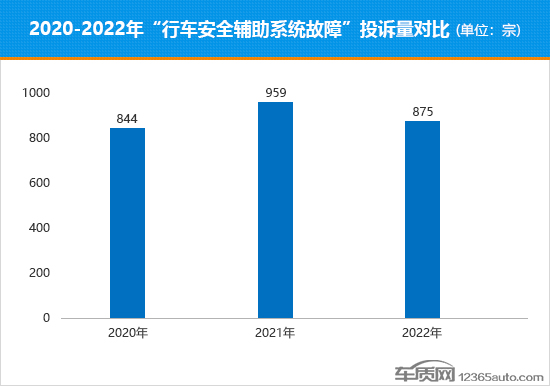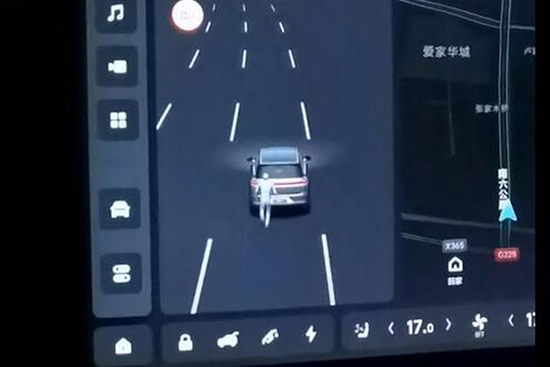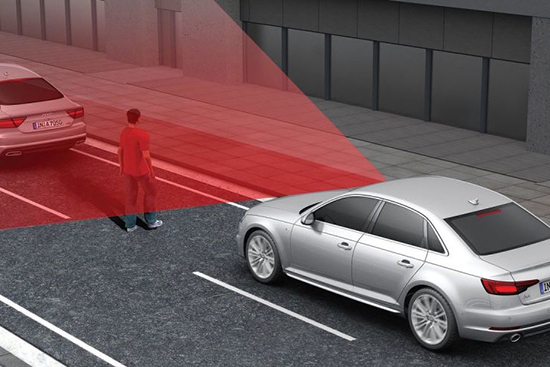Recently, an Ideal L8 owner posted on the Internet that while driving at night, he suddenly discovered that the vehicle sensing system prompted someone to chase the car from behind. After checking, it was confirmed that there was no one behind the car. Afterwards, Li Auto officially responded that the situation occurred because of a bug in the visual perception algorithm of Li Li L8 Pro (AD Pro platform version 4.2). Since it was raining lightly on the night of the incident, the system mistakenly recognized raindrops as pedestrians. Although it was just a false alarm, the incident still triggered heated discussions about the reliability of driving assistance systems.
Bugs appear frequently and complaints continue to rise. Driving assistance technology is still imperfect

Smart cars have become a strategic direction for the development of the global automobile industry, and driver assistance technology, one of the core technologies, has also ushered in rapid development. However, limited by policies and regulations, the current level of autonomous driving is generally still at the L2 stage, also known as L2-level assisted driving, which means that the vehicle achieves partial automation and is still a long way from fully autonomous driving. At the same time, as the market penetration of driving assistance technology gradually increases, more and more problems are exposed. According to data from Chezhi.com, from 2020 to 2022, the number of complaints about "driving safety assistance system failure" has remained high, and it has become the car with the third highest number of complaints, in addition to "audio and video system failure" and "vehicle interconnection failure" Intelligent network connection issues.

In fact, problems with visual perception systems similar to those of the Ideal L8 are not unique, and similar problems have also occurred in other models. In 2021, a foreign Tesla owner posted a video on a social platform saying that when he drove his Tesla past an uninhabited cemetery, the central control screen sensed many figures. Many Tesla owners in China also reported encountering similar situations.
Fortunately, the owner of the Ideal L8 was just startled by an inexplicable figure. But imagine if this figure appeared at the front of the car while driving at high speed, or at the rear of the car when reversing, causing the system to misjudge and execute an emergency. If the vehicle brakes, the consequences will be disastrous and will pose a serious threat to the personal safety of the car owner. However, even though such problems have been learned from the past, judging from the Ideal L8 incident, it is clear that Ideal officials have not paid enough attention to such issues.
Software algorithm "takes the blame", driving assistance technology still needs to be continuously optimized
As a key step towards high-level autonomous driving from L2 driving assistance, software algorithms play a vital role. Software algorithms can be divided into perception algorithms, fusion algorithms, decision-making algorithms and execution algorithms. The perception algorithm commonly used by car companies currently converts sensor data into machine language for the scene in which the vehicle is located, including object detection, recognition and tracking, 3D environment modeling, object motion estimation, etc. Whether it is the previous Tesla Autopolit misjudgment or the recent Ideal L8 system BUG, it is all due to problems with the perception algorithm, which in turn affects the accuracy of system recognition.

Therefore, how to improve algorithms to improve obstacle detection accuracy and decision-making capabilities in complex scenarios will become the focus of the next stage of research and development of driving assistance technology. On the one hand, it can increase the number of sensors, improve the computing power of system chips, and make more accurate judgments through hardware-assisted software algorithms; on the other hand, it can also use the data obtained from 5G V2X facilities and high-precision map information, as well as the data collected in the past. Data information such as driving behavior, driving experience, driving rules, cases and surrounding environment are used to continuously optimize the algorithm.
To nip problems in the bud, it is imperative for car companies to eliminate safety hazards in driving assistance systems
Relevant agencies predict that by 2027, the global autonomous driving market will reach US$575.473 billion. Although driving assistance technology is becoming increasingly mature and its application scope is becoming wider and wider, some problems will inevitably arise when faced with complex road conditions and different weather conditions.

Looking at the bugs in various driving assistance functions, the common point is that the system algorithm has certain limitations. When the external environment changes, the algorithm may cause recognition errors due to untimely updates, which will have a serious impact on user experience and driving safety.
Fortunately, serious accidents caused by bugs in driving assistance systems are not common at present, and the attitude of car companies towards such problems is worthy of recognition. However, regarding possible safety hazards of driving assistance systems, it is still recommended that car companies develop a more complete software verification plan before the new car is launched , fully test different scene modes and extreme environments, eliminate software problems in a timely manner, and avoid new cars "bringing Disease" is on the market. In addition, after a new car is launched, car companies should continue to optimize the functional experience by collecting vehicle data, proactively discover problems, and eliminate safety hazards, instead of passively solving problems after each problem occurs.
Summarize:
The driving assistance system was originally a technology designed to protect the safety of drivers and passengers in a more timely and effective manner by sensing dangers in advance while the vehicle is driving. In the process of continuous development, problems of one kind or another will inevitably arise, but car companies must not take it lightly for some problems that may pose a threat to driving safety. Only by continuously discovering and promptly improving possible safety hazards and maximizing consumer driving safety and user experience can we truly promote the continuous development of intelligent driving assistance technology.
Previous article:One article taking stock of the 2023CES smart driving supply chain
Next article:Musk is under U.S. investigation for “fake” self-driving ads
- Popular Resources
- Popular amplifiers
- A new chapter in Great Wall Motors R&D: solid-state battery technology leads the future
- Naxin Micro provides full-scenario GaN driver IC solutions
- Interpreting Huawei’s new solid-state battery patent, will it challenge CATL in 2030?
- Are pure electric/plug-in hybrid vehicles going crazy? A Chinese company has launched the world's first -40℃ dischargeable hybrid battery that is not afraid of cold
- How much do you know about intelligent driving domain control: low-end and mid-end models are accelerating their introduction, with integrated driving and parking solutions accounting for the majority
- Foresight Launches Six Advanced Stereo Sensor Suite to Revolutionize Industrial and Automotive 3D Perception
- OPTIMA launches new ORANGETOP QH6 lithium battery to adapt to extreme temperature conditions
- Allegro MicroSystems Introduces Advanced Magnetic and Inductive Position Sensing Solutions
- TDK launches second generation 6-axis IMU for automotive safety applications
- LED chemical incompatibility test to see which chemicals LEDs can be used with
- Application of ARM9 hardware coprocessor on WinCE embedded motherboard
- What are the key points for selecting rotor flowmeter?
- LM317 high power charger circuit
- A brief analysis of Embest's application and development of embedded medical devices
- Single-phase RC protection circuit
- stm32 PVD programmable voltage monitor
- Introduction and measurement of edge trigger and level trigger of 51 single chip microcomputer
- Improved design of Linux system software shell protection technology
- What to do if the ABB robot protection device stops
- Huawei's Strategic Department Director Gai Gang: The cumulative installed base of open source Euler operating system exceeds 10 million sets
- Download from the Internet--ARM Getting Started Notes
- Learn ARM development(22)
- Learn ARM development(21)
- Learn ARM development(20)
- Learn ARM development(19)
- Learn ARM development(14)
- Learn ARM development(15)
- Analysis of the application of several common contact parts in high-voltage connectors of new energy vehicles
- Wiring harness durability test and contact voltage drop test method
- Year-end feedback: EEWorld's 2018 Most Influential Netizens' Choice
- [Qinheng RISC-V core CH582] 1- Unboxing and use
- Single-chip microcomputer example of single light flashing
- FPGA Essay - On Deficiencies
- [NUCLEO-L552ZE Review] + ADC-based fluorescence value reading
- TI Live: Detailed talk on "Bidirectional CLLLC Resonant, Dual Active Bridge (DAB) Reference Design", watch and win gifts (64 in total)
- How does AD software collect company information?
- [GD32L233C-START Review] 11. GD32 ISP software does not support GD32L233 yet
- Last day! Answer questions to win prizes! Practical sharing | Design a reliable switching power supply from scratch
- How to detect whether the switching power supply transformer is good or bad?

 UPC4744G2
UPC4744G2











 京公网安备 11010802033920号
京公网安备 11010802033920号